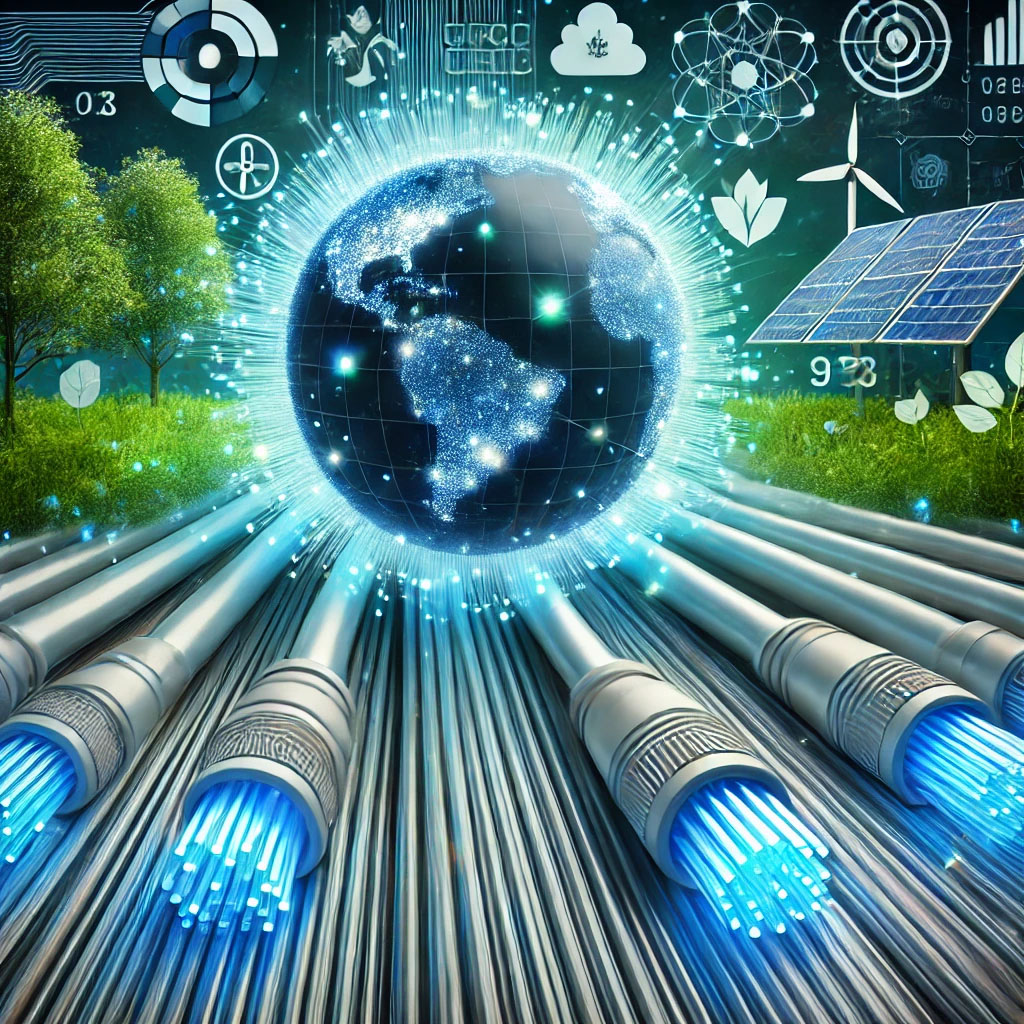In an age where connectivity has become crucial, the environmental impact of traditional internet infrastructure may go unnoticed. Luckily, fiber optic cables, a revolutionary technology in the world of broadband, can offer great advantages for those of us who want to stay environmentally conscious. Fiber optics can pave the way for a bright, greener future from energy efficiency to reduced material usage and improved reliability.
Energy efficiency
One of the most significant environmental benefits of fiber optic cables is their energy efficiency. Fiber optic networks use light to transmit data, requiring less energy than the electrical signals used in traditional broadband connections. This reduction in energy consumption may lead to lower greenhouse gas emissions, which makes fiber optics a critical component in the fight against climate change.
Regular broadband systems with copper wires rely on electrical signals that decrease over distance. This can require buying signal-boosting devices and expanders, which may use more energy. On the other hand, fiber optic cables can transmit data over much longer distances without significant signal loss, which may reduce the need for energy-consuming equipment. This efficiency not only conserves energy but also reduces your carbon footprint by eliminating the purchase of extra interconnectivity devices.
Lower Material Usage and Waste
Fiber optic cable production and installation often require fewer raw materials than traditional copper-based systems. When it comes to regular broadband, copper mining and processing are necessary, which can be energy-intensive and generate significant environmental pollution. Copper mining can contaminate surrounding soil and water as well as increase land erosion. With fiber optic cables, the materials used are mainly plastic or glass, which can have a lower environmental impact.
Additionally, fiber optic cables are lighter and thinner than copper cables, which means fewer materials for installation. This can result in reduced transportation emissions and less physical infrastructure, which makes fiber optic a greener alternative.
Reduced Heat Generation
Fiber optic cables generate significantly less heat than copper-based systems. Traditional broadband networks often require cooling systems to manage the heat produced by electrical signals and amplifiers. Having cooling systems means additional energy needs to be generated, which can contribute to your overall carbon footprint. Fiber optics, on the other hand, operate with less heat generation, eliminating the need for extensive cooling infrastructure. This conserves energy and reduces the wear and tear on network equipment, making fiber optic more sustainable and reliable than traditional wires.
Improved Network Reliability
Environmental sustainability can also include resilience against natural disasters or extreme weather conditions. Fiber optic cables are more durable and less susceptible to environmental damage compared to traditional copper cables, which can lead to improved ecological sustainability. They are more resistant to water and corrosion, making them ideal for places that are prone to flooding or severe weather.
This increased reliability can reduce the frequency of repairs and replacements, minimizing the environmental impact associated with maintenance activities. Fewer damages to connectivity also means more stable and dependable internet, which is crucial for businesses and workers who rely on Wi-Fi for their productivity.
Enabling Remote Work and Virtual Services
Fiber optic networks can support higher speeds and improved internet connections that can help with remote work, virtual meetings, and online services like telemedicine and virtual learning. By reducing the need for commuting and physical infrastructure, online services can contribute to lower greenhouse gas emissions, decreased resource consumption, and improved sustainability. The COVID-19 pandemic ushered in a new wave of virtual living, which has had certain positive environmental impacts.
Fiber optic cables have become more crucial to sustaining this new culture of remote work and education. The importance of reliable and fast internet connections, while being conscientious about the environment, has led more users to invest in fiber optic rather than copper.
Decreasing E-Waste
The transition to fiber optic networks can also help reduce electronic waste, also known as e-waste. E-waste is a relatively newer term for discarding outdated or unused technology like computers, TVs, phones, or fax machines. Due to degradation, copper-based systems need consistent upgrades and replacements, which can lead to significantly higher amounts of e-waste. On the flip side, fiber optic cables have a longer lifespan and can accommodate future technological advancements better without robust modifications. The increased longevity of fiber optics reduces the volume of outdated equipment that typically ends up in landfills, where it can also release harmful chemicals into the environment.
Recycling and Reusability
Fiber optic cables are more recyclable than their copper counterparts. While copper can be recycled, the extraction process often involves environmentally damaging chemicals. Fiber optic materials like glass can be more easily repurposed or recycled with fewer ecological consequences. The recyclability advantage further proves the sustainability of fiber optic technology and can help reduce waste and toxins from technology that has to be disposed of.
Comparing Carbon Footprints
When comparing the carbon footprints of fiber optic and traditional broadband systems, fiber optics have a significant advantage. Their energy efficiency, reduced material usage, and longer lifespan all contribute to a lower overall environmental impact. Fiber optic cables can conserve up to 80% of energy compared to traditional copper wires, making the former a more sustainable investment.
Why Choose Fiber Optic?
As the demand for high-speed internet continues to grow, it is necessary to consider the environmental impact of everyday technology that powers our digital lives and remote work. Fiber optic cables offer a greener alternative to traditional broadband systems, with benefits ranging from energy efficiency and reduced material usage to decreased e-waste and improved network reliability. By making the move to fiber optic networks, we not only enhance our connectivity but also take a significant stride toward a more sustainable and environmentally friendly future. Embracing fiber optics is not just a technological advancement, it’s a crucial move to protect and preserve our Earth.
